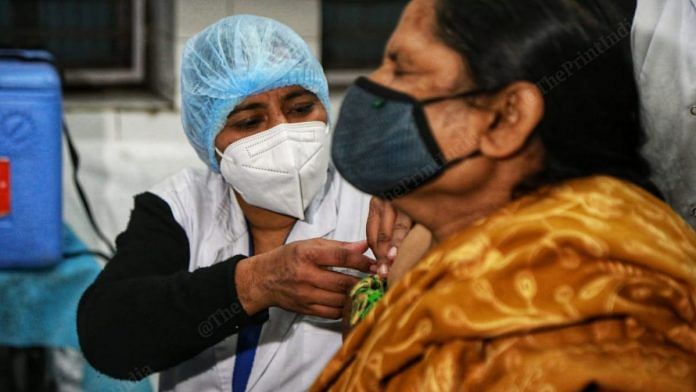
New Delhi: The Modi government is gearing up to hold a third and possibly final Covid-19 vaccine dry run on 8 January, but this time in all 718 districts of the country. The dry run comes just before the government’s self-imposed deadline of 13 January for a vaccine rollout.
Health Minister Dr Harsh Vardhan will hold a meeting with state health ministers at 12.30 pm Thursday to brief them about the exercise.
“We have had two limited exercises, the first was only in four states and the second mostly in state capitals. From what I understand the exercise on 8 January will be countrywide, in every district where three to four session sites will do a dry run to test the feasibility of a simultaneous countrywide exercise,” said a senior health official.
“At least three session sites in every district will be a part of the exercise. States will be told about the details tomorrow.”
The first vaccine dry run was held on 28 and 29 December in seven districts — Krishna (Andhra Pradesh), Rajkot and Gandhinagar (Gujarat), Ludhiana and Shaheed Bhagat Singh Nagar (Punjab) and Sonitpur and Nalbari (Assam).
Incorporating lessons from the first exercise and making some tweaks in CoWIN (Covid Vaccine Intelligence Network), the digital vaccine delivery platform, a second countrywide dry run was held in all state capitals on 2 January. The state governments were then asked to carry out a mock drill in at least three sites.
The one now slated for 8 January is the largest until date and will mimic the real time rollout and also test the capacity of CoWIN to handle simultaneous use across so many sites, officials said.
On 3 January, India had granted accelerated approval to two Covid-19 vaccines — Covaxin, manufactured by Bharat Biotech, and Covishield, manufactured by Serum Institute of India. On Tuesday, Health Secretary Rajesh Bhushan had said that the vaccine rollout will happen within 10 days from the date of approval.
‘Back end is ready’
Health ministry officials say the backend preparations for transportation and storage of vaccines from the manufacturing facilities to the 37 government medical store depots in 37 locations in refrigerated vans have been finalised.
During the earlier dry runs, one important feedback received from states was the need for real-time monitoring of adverse events following immunisation (AEFI).
Directions have been issued to all 90,000-odd trained vaccinators and district health departments for this.
While the health ministry has been tight-lipped about AIIMS director Dr Randeep Guleria’s statement that vaccination would start with Covisheld and that Covaxin could be a backup, other top government officials, speaking off the record to ThePrint, have confirmed that such is the plan.
“SII has a stockpile of about 5 crore doses while Bharat has just about 1.5 crore ready. So it makes sense to start with the vaccine that is available in larger quantities,” said a senior official involved in the vaccination planning and implementation.
Subscribe to our channels on YouTube & Telegram
Why news media is in crisis & How you can fix it
India needs free, fair, non-hyphenated and questioning journalism even more as it faces multiple crises.
But the news media is in a crisis of its own. There have been brutal layoffs and pay-cuts. The best of journalism is shrinking, yielding to crude prime-time spectacle.
ThePrint has the finest young reporters, columnists and editors working for it. Sustaining journalism of this quality needs smart and thinking people like you to pay for it. Whether you live in India or overseas, you can do it here.